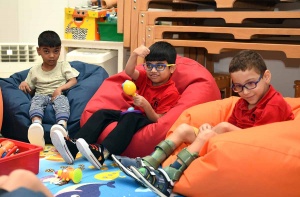 Children progress from our Reception Classes to the Middle School. We continue to focus on communication, access to the curriculum and mobility, and work towards the children becoming as independent as possible.
Children progress from our Reception Classes to the Middle School. We continue to focus on communication, access to the curriculum and mobility, and work towards the children becoming as independent as possible.
We aim to deliver a broad and balanced curriculum through a termly topic that is matched to the children’s individual abilities. We follow the British National Curriculum, but tailor it to suit the needs of the young people. The subjects studied within this department are:
- English or Arabic (dependent on the stream)
- Numeracy
- History
- Geography
- Art and design
- Music
- Physical education (PE), including swimming (for most classes)
- Computing
- Personal and Social Development
- Cultural Awareness / Islamic Studies
Physiotherapy, occupational and speech and language therapies are also integrated throughout the school day.
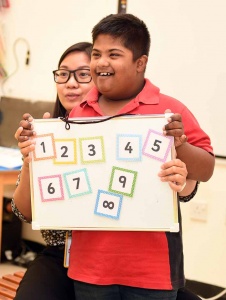 General
General
Each class has between 6-10 children with one teacher and one teaching assistant.
Integrated Learning Groups (ILG)
There are 4 classes in ILG across the different levels of the school. The students range in age from 4 years starting in ILG 1 and ending at 18 years in ILG4. Since motor difficulties are a challenge for all the students in this Department, incorporating therapy into their daily lives in school and at home is a key element in the program.
This involves special furniture for seating, use of adapted equipment and resources for mobility, communication and educational purposes.
The Curriculum followed is based on the National Curriculum of the UK, but adapted to suit the unique needs of the students. The subjects studied are:
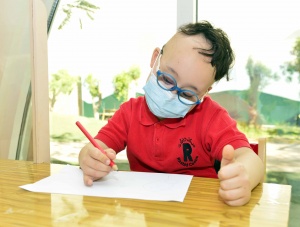 ● English
● English
● Maths
● Science
● Geography
● Understanding the World
● UAE Social Studies
Extra-Curricular activities such as Art & Craft, Music, Motion Drama are very much a part of the weekly timetable. In addition, all classes within the Department makes provision for personal, social, health and economic education (PSHE), drawing on good practice; a termly topic that is age appropriate and relevant. In order to help students access the Curriculum, digital resources, adapted keyboards, reading and writing support through the use of special programs such as Clicker 7 are extensively used.
We aim to help the students integrate with mainstream schools and work with parents towards it.
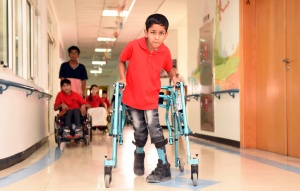 Integrated Sensory Learning Groups (ISL)
Integrated Sensory Learning Groups (ISL)
We have Integrated Sensory Learning groups (ISLs) which are for those children identified as having significant sensory, communication and learning challenges
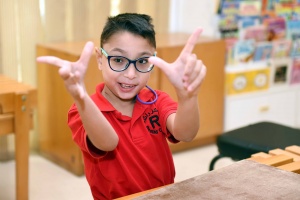 The Sensory Department or what is called ISL ‘Integrated Sensory Learning’ uses the British Early Years Foundation Stage Curriculum (EYFS). This offers young children with Play and Sensory based Learning while focusing on the development of these areas:
The Sensory Department or what is called ISL ‘Integrated Sensory Learning’ uses the British Early Years Foundation Stage Curriculum (EYFS). This offers young children with Play and Sensory based Learning while focusing on the development of these areas:
Personal, Social and Emotional Development, Physical Development, Communication, Literacy, Mathematics, Understanding the World and Expressive Arts and Design.
Whereas the older ISL classes use the British National Curriculum, that includes same learning development as listed above and has given more opportunities to explore learning through Creative arts (Drama, Arts and Crafts, Music and Physical Education), Swimming (for most classes) and Daily life skills and activities.
We use different teaching approaches such as Sensory Integration, Total
Communication, Intensive Interaction and Combined Sensory and Academic Approach.
● Sensory Integration – is a multi-disciplinary approach that enables a child to respond to sensory input from his own senses, body, and environment.
● Total Communication – it uses some or all sorts of modalities to communicate, such as spoken words, Makaton Signs, Picture Exchange Communication System (PECS), body languages, standardized gestures, and symbols.
● Intensive Interaction – it is an interactive child-led approach as the basis of communication for children at an early age. It aims to provide early signs of communication and positive interaction between an adult and a child.
● Combined Sensory and Academic Approach – this learning approach is best for children who are with sensory needs but with high academic potentials. The main focus is to make use of a wide range of sensory strategies that will best fit their needs while increasing the child’s level of cognitive abilities.

